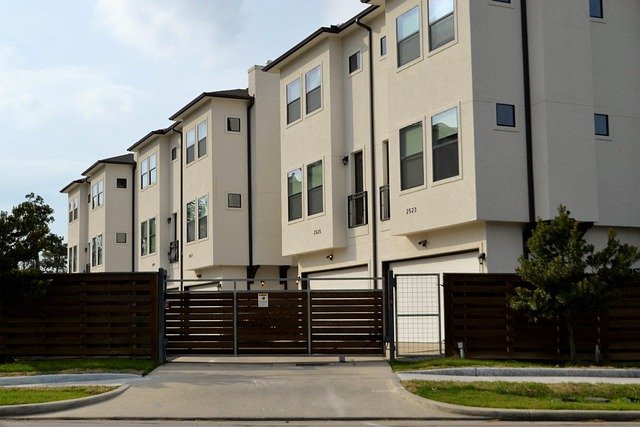Reimagining Suburban Retail: The Rise of Lifestyle Centers
The landscape of suburban retail is undergoing a dramatic transformation. As traditional malls struggle to maintain relevance, a new concept is reshaping the way people shop, dine, and socialize in suburban areas. Lifestyle centers, blending open-air shopping with entertainment and residential spaces, are becoming the new cornerstone of suburban commercial real estate. This shift is not just changing consumer habits; it's redefining property values and investment strategies in these areas.

Lifestyle centers emerged as a response to these changing dynamics. Unlike traditional malls, these centers are designed to be integrated into the community, offering a mix of retail, dining, entertainment, and sometimes residential spaces. They often feature open-air designs, walkable streets, and a focus on creating a sense of place rather than just a shopping destination.
Key Features of Lifestyle Centers
What sets lifestyle centers apart from their predecessors? Several key features distinguish these developments:
-
Open-air design: Most lifestyle centers eschew the enclosed structure of traditional malls in favor of an outdoor layout that mimics a town center or main street.
-
Mixed-use development: Beyond just retail, these centers often incorporate office spaces, residential units, and sometimes even hotels.
-
Emphasis on experience: Lifestyle centers prioritize creating memorable experiences through unique dining options, entertainment venues, and community events.
-
Integration with surroundings: Unlike malls that stand as isolated entities, lifestyle centers are designed to blend seamlessly with the surrounding community.
-
Focus on higher-end retailers: Many lifestyle centers target upscale demographics, featuring premium brands and boutique shops.
Impact on Property Values and Investment
The rise of lifestyle centers is having a significant impact on suburban real estate markets. Properties near these developments often see an increase in value due to the improved amenities and community appeal. For investors, this trend presents new opportunities in both commercial and residential real estate.
Commercial investors are finding that lifestyle centers offer a more stable tenant mix compared to traditional malls. The diversity of uses helps to insulate these properties from the volatility of any single retail sector. Additionally, the focus on creating a community destination helps to drive foot traffic, benefiting all tenants.
Residential real estate near lifestyle centers is also seeing positive effects. The walkable, amenity-rich environment created by these developments is highly attractive to homebuyers, particularly millennials and empty nesters. This demand is driving up property values in surrounding neighborhoods and creating opportunities for residential developers to create complementary housing options.
Challenges and Considerations
While lifestyle centers represent an exciting evolution in suburban retail, they are not without challenges. Developers and investors must carefully consider several factors:
-
Higher development costs: Creating a mixed-use environment with high-quality finishes and amenities often requires a significant upfront investment.
-
Competition from e-commerce: Even with their experiential focus, lifestyle centers must still contend with the convenience of online shopping.
-
Economic sensitivity: The upscale nature of many lifestyle centers makes them more vulnerable to economic downturns.
-
Zoning and regulatory hurdles: Developing mixed-use properties often requires navigating complex zoning regulations and obtaining multiple approvals.
-
Maintaining the right tenant mix: Success depends on curating a diverse and appealing mix of retailers, restaurants, and service providers.
Future Trends and Opportunities
As lifestyle centers continue to evolve, several trends are emerging that could shape their future development:
-
Increased integration of technology: From smart parking systems to augmented reality shopping experiences, technology will play a growing role in enhancing the lifestyle center experience.
-
Focus on sustainability: Many new developments are incorporating green building practices and sustainable design elements to appeal to environmentally conscious consumers.
-
Health and wellness integration: Fitness centers, medical offices, and wellness-focused retailers are becoming more common in lifestyle center tenant mixes.
-
Expansion of residential components: Some developers are increasing the residential density within lifestyle centers to create true live-work-play environments.
-
Adaptive reuse of existing malls: Many failing malls are being reimagined as lifestyle centers, presenting unique redevelopment opportunities.
For real estate investors and developers, lifestyle centers represent a compelling opportunity to capitalize on changing consumer preferences and create value in suburban markets. As these developments continue to evolve, they have the potential to reshape suburban landscapes and redefine the concept of community in these areas.
The success of lifestyle centers underscores a broader shift in real estate: the growing importance of creating spaces that foster community and provide experiences beyond traditional retail or residential offerings. As this trend continues, it will likely influence development patterns and investment strategies across various real estate sectors, making it a critical area for industry professionals to watch and understand.





